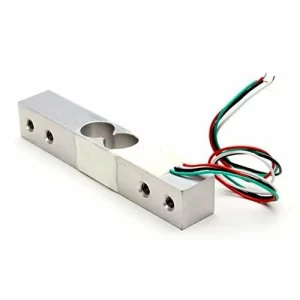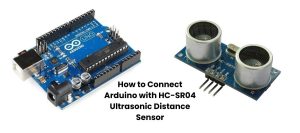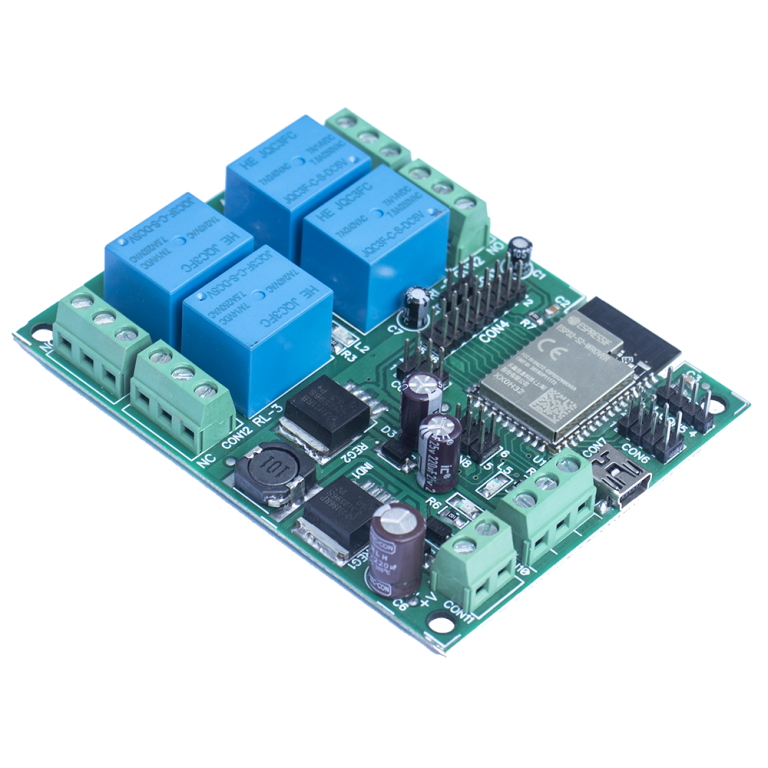Top 9 Home Security System Features to Consider in 2024: A Comprehensive Guide
The Evolving Landscape of Home Security in 2024
Introduction :
This guide provides an in-depth analysis of the essential features to consider when choosing a home security system. The guide is based on extensive testing and reviewing of home security systems, taking into account factors such as reliability, flexibility, smart home integrations, affordability, and more.
This guide aims to help you make informed decisions to ensure the safety and security of your homes. We will cover a wide range of topics, including the best home security systems of 2024, factors to consider when choosing a home security system, and how home security systems work.
2. Assessing Your Home Security Needs
When contemplating a home security system, a crucial step is evaluating your specific security requirements to pinpoint the most fitting features for your home. One effective method is utilizing a Security Score tool. This tool considers factors like your home’s size, the local crime rate, and any past security incidents, offering a personalized assessment of your security needs. It aids in prioritizing features essential to your situation.
Factors to Consider
Determining your security needs involves considering your home’s layout, the number of entry points, and identifying vulnerable areas needing extra protection. For instance, if your home features large windows or a secluded back door, prioritizing window and door sensors, along with outdoor cameras, becomes imperative.
Moreover, if your home shelters valuable assets or collectibles, considering features like a safe or a security system with environmental monitoring to safeguard against fire or water damage is wise. Conversely, pet owners must factor in their furry friends when selecting motion sensors to prevent false alarms.
By meticulously assessing your security needs, you ensure that your chosen home security system is tailored to provide optimal protection for your home and family. This personalized strategy helps you avoid unnecessary expenses while focusing on features most relevant to your situation.
3. Customizability: Tailoring Home Security to Your Needs
A pivotal aspect of a home security system is its customizability. It should seamlessly adapt to the unique requirements of a household. This involves the flexibility to choose and integrate various components based on property layout, vulnerabilities, and the preferences of the occupants.
Personalized Features
Customizability extends to features like sensor types and placements, automation levels, and integration with other smart home devices. For instance, a system allowing users to select specific entry points for motion sensors or customize alert settings based on daily routines provides a more tailored security solution.
Expandability: Growing Security with Your Needs
The ability to expand a home security system is paramount, especially for evolving households or properties. An expandable system empowers users to add more sensors, cameras, or other components as their needs evolve, without necessitating a complete overhaul of the existing setup.
Future-Proof Security
This feature is particularly beneficial for those starting with a basic security system but intending to enhance it over time. A system supporting additional cameras, environmental sensors, or home automation devices can seamlessly adapt to changing security and lifestyle needs.
As of 2023, the home security market presents an array of customizable and expandable systems, offering both DIY and professional options. These systems leverage wireless technology, advanced software, and modular hardware to provide high levels of customizability and expandability.
The trend towards smart home integration and the increasing availability of standalone security devices, such as video doorbells and environmental sensors, emphasizes the significance of customizability and expandability in modern home security systems.
In conclusion, a home security system featuring customizability and expandability ensures users can tailor their security setup to specific needs and seamlessly adapt it as circumstances change. This flexibility stands as a key consideration for individuals seeking a comprehensive and future-proof security solution.
4. The Crucial Role of Professional Monitoring in Home Security
Professional monitoring stands as a crucial feature in a home security system, providing continuous surveillance by a dedicated team of security professionals. The advantages are substantial, significantly enhancing the system’s effectiveness. Let’s delve into some key benefits:
1. Timely Emergency Response
Swift detection and addressing of security breaches or emergencies are ensured with professional monitoring. In the event of an alarm, the monitoring center verifies the situation, promptly notifying the appropriate authorities, leading to a faster response.
2. 24/7 Surveillance
Unlike self-monitoring, which relies on homeowners, professional monitoring offers constant vigilance. This continuous oversight is vital for security, especially when occupants are away from the property.
3. Regular System Testing
Professional monitoring services often include routine testing of home alarm systems by trained professionals. This ensures optimal system functionality and identifies any issues requiring attention.
4. Potential Insurance Premium Discounts
Many homeowners’ insurance companies provide discounts for properties with professionally monitored security systems. This offsets monitoring service costs, offering additional financial benefits to homeowners.
Weighing the Costs and Considerations
While professional monitoring brings numerous advantages, it’s essential to consider associated costs, typically ranging from $30 to $70 per month. There’s no guarantee the system will work as advertised, prompting some security experts to recommend professional monitoring over self-monitoring due to the latter’s safety risks.
When comparing systems with professional monitoring, evaluate the specific features and services offered by each security company. Consider factors such as the quality and responsiveness of the monitoring center, additional security features beyond basic alerts, and the overall cost of the monitoring service.
Companies like Frontpoint offer comprehensive home security packages, including professional monitoring, advanced technology, and features like home automation, providing a holistic security solution.
5. The Crucial Role of Security Cameras in Home Security
Security cameras stand as indispensable components within a home security system, providing visual surveillance and recording capabilities that elevate overall property protection. Their significance lies in real-time monitoring, evidence collection, and the deterrence of potential threats. The year 2023 introduces advanced security cameras with diverse features, rendering them more accessible and effective than ever.
Exploring Different Types of Security Cameras in 2024
- Indoor Cameras: Designed for interior use, these compact and discreet cameras monitor specific areas like entryways, living spaces, or valuable possessions.
- Outdoor Cameras: Withstanding the elements, outdoor cameras surveil the property’s exterior, including front and back yards, driveways, and other outdoor areas. They often feature night vision and motion detection.
- Wireless Cameras: Connecting to the home’s Wi-Fi network, these cameras provide flexibility in placement and ease of installation. Suitable for both indoor and outdoor use, they offer remote access via a mobile app or web interface.
- Wired Cameras: Connected to a central recording device or network video recorder (NVR) via cables, wired cameras are known for reliability and continuous recording capabilities, making them suitable for areas requiring constant surveillance.
- PTZ Cameras: PTZ (pan-tilt-zoom) cameras allow remote control of the viewing angle, ideal for large outdoor spaces or areas requiring flexible monitoring.
- Smart Cameras: Equipped with advanced features like facial recognition and person detection, smart cameras integrate with smart home platforms, sending alerts based on specific events.
The best home security cameras in 2023 offer a plethora of features, from motion-triggered recordings to remote live streaming and advanced functionalities like facial recognition. No longer considered luxuries, prices start as low as $30, making them accessible to a wide range of homeowners.
Choosing the Right Security Cameras for Your Home
When selecting security cameras, essential factors include video and audio quality, field of view, night vision, local and cloud recording, and smart features. The choice should align with specific security needs and the property layout for comprehensive coverage and effective surveillance.
Thus, security cameras play a critical role in enhancing home security by offering visual monitoring, recording, and deterrence of potential threats. The diverse camera types and advanced features available in 2023 enable the creation of a tailored and effective home security system, meeting the unique needs of each property.
6. Smart Integration in Home Security Systems:
This integration offers several benefits and will become increasingly prevalent in 2023. Some of the key aspects to elaborate on include:
- Seamless Automation: Smart home integration allows for the seamless automation of various home security and non-security devices. For example, a home security system can be linked to smart door locks, lights, and thermostats, enabling coordinated actions such as arming the security system, locking the doors, and adjusting the temperature when the homeowner leaves the house.
- Enhanced Convenience: The integration of home security systems with smart home devices enhances convenience by providing centralized control and monitoring. Homeowners can manage their security system, surveillance cameras, and other connected devices through a single interface, such as a mobile app or voice commands.
- Expanded Functionality: Smart home integration expands the functionality of a home security system by leveraging the capabilities of smart devices. For instance, security cameras can be integrated with smart speakers to provide real-time audio alerts, or motion sensors can trigger smart lights to deter potential intruders.
- Customization and Personalization: Integrated smart home security systems offer a high degree of customization and personalization. Users can create custom automation routines, schedules, and rules to tailor the system to their specific preferences and routines.
- Remote Access and Monitoring: Smart home integration enables remote access and monitoring of the security system and connected devices from anywhere with an internet connection. This allows homeowners to receive alerts, view live camera feeds, and control their security system while away from home.
In 2023, the market for smart home security devices and platforms will have expanded significantly, with many leading security companies offering integrated solutions that combine home security, automation, and smart device control. For example, companies like Cove have disrupted the market by providing affordable pricing, easy DIY installation, and a wide range of smart home automation features.
The trend of integration is not limited to dedicated security companies, as smart thermostat brands like Ecobee and security camera brands like Arlo are also incorporating whole-home security systems into their product lines, further blurring the lines between traditional security devices and smart home technology.
7. Mobile App and Remote Access for Home Security Systems
Mobile apps and remote access stand as pivotal features in contemporary home security systems. It empowers homeowners with the capability to oversee and manage their security systems effortlessly through a mobile app or web interface. Let’s delve into the intricacies of this feature and its significance in the landscape of 2024.
Remote Arm/Disarm: Flexibility at Your Fingertips
The mobile app extends the ability for users to remotely arm or disarm their security system, delivering flexibility and convenience, especially when away from home. This feature allows homeowners to have control over their security system from any location, utilizing their smartphone or tablet.
Real-time Alerts and Notifications: Stay Informed on the Go
By providing real-time alerts and notifications, the app keeps users updated on security events and system activities. From intrusion detection to motion sensor activations, door/window openings, and system malfunctions, homeowners receive instant updates directly on their mobile devices.
Live Video Streaming: A Visual Insight
Modern security systems offer live video streaming through their mobile apps, granting users access to real-time camera feeds from their property. This feature enables homeowners to visually confirm security events and monitor their homes while they are away.
Event History and Activity Logs: Review and Reflect
The app offers access to the security system’s event history and activity logs, allowing users to retrospectively review past security events, system arming and disarming activities, and sensor activations.
Integration with Smart Home Devices: Unifying Home Automation and Security
Functioning as a central hub, the mobile app facilitates the control and management of other smart home devices. This includes smart door locks, lights, thermostats, and garage door openers, providing a unified interface for both home automation and security.
Two-way Voice Communication: Connecting Homeowners
Some security systems offer two-way voice communication through their mobile apps, enabling users to communicate with monitoring center operators or speak to visitors at their door using their smartphones.
Standardization of Mobile App and Remote Access
In 2024, the mobile app and remote access feature will become standard offerings for most home security systems. Security companies are heavily investing in user-friendly app interfaces, advanced functionalities, and seamless integration with smart home devices.
The convenience and peace of mind provided by remote access and control have elevated this feature to a necessity for modern homeowners seeking to fortify their home security and monitoring capabilities.
In short, the mobile app and remote access feature stand as the cornerstones of modern home security systems. It provides users with convenient, real-time control and monitoring of their security systems from anywhere.
With functionalities like remote arming and disarming, real-time alerts, live video streaming, and smart home integration, homeowners are presented with a comprehensive and user-friendly solution for managing their home security and automation needs.
8. “No-Contract Options” in Home Security Systems
“No-Contract Options” revolves around the emergence of home security systems that liberate users from long-term commitments. In 2024, this feature is gaining prominence as homeowners increasingly seek security solutions that are both flexible and cost-effective. Delving into this point necessitates exploring key aspects:
1. Flexibility: Liberating Homeowners from Long-Term Commitments
No-contract security systems eclipse their traditional counterparts by providing greater flexibility. Homeowners can now alter or terminate their service without incurring penalties or fees at any juncture.
2. Affordability: Breaking the Mold of Upfront Costs
No-contract security systems present a more economical alternative as they eliminate upfront expenses and protracted commitments. This appeals to homeowners desiring property protection without straining their finances.
3. Ease of Installation: DIY Convenience
Designed for straightforward DIY installation, no-contract security systems require minimal wiring and setup. Homeowners can promptly and easily install their security systems, negating the need for professional assistance.
4. Scalability: Tailoring Security Solutions to Individual Needs
No-contract security systems often boast scalability, allowing homeowners to add or remove components without committing to long-term agreements. This flexibility enables customization based on specific needs and budget constraints.
5. Remote Access and Monitoring: Real-Time Control Anywhere, Anytime
These systems frequently offer remote access and monitoring via mobile apps or web interfaces. This empowers homeowners with real-time control and oversight, enhancing the security system’s efficacy.
The year 2024 will witness a substantial surge in the availability of no-contract security systems. Leading security companies, exemplified by SimpliSafe, offer an array of options characterized by ease of installation, scalability, and remote accessibility and monitoring. Cove, another notable player, introduces advanced features like smart home integration and professional monitoring in its no-contract security systems.
In summation, no-contract security systems furnish homeowners with superior flexibility, affordability, and installation ease compared to their traditional counterparts.
The proliferation of these options in 2023 empowers homeowners to safeguard their property without being tethered to long-term commitments or burdened by upfront costs.
9. Customer Support and User Experience in Home Security Systems
24/7 Customer Support
A reliable home security system must deliver 24/7 customer support, addressing any issues or emergencies promptly. This encompasses technical support, troubleshooting, and emergency response, ensuring users feel secure around the clock.
Professional Installation Services
For homeowners opting for professional installation, the availability of these services significantly enhances the overall user experience. Professionally installed systems minimize the risk of errors or malfunctions, providing peace of mind.
User-Friendly Interface and Design
The user interface, spanning the control panel, mobile app, and web interface, should be intuitive, user-friendly, and well-designed. This contributes to a positive user experience, enabling homeowners to easily manage and monitor their security system.
Reliability and Performance
A reliable security system, consistent in performance, is pivotal for a positive user experience. This involves assessing the hardware’s reliability, system responsiveness, and the accuracy of alerts and notifications.
Transparent Pricing and Policies
Clear and transparent pricing, coupled with fair and customer-friendly policies, builds trust and satisfaction among users. This encompasses transparent pricing structures, the absence of hidden fees, and flexible cancellation policies.
Community and User Reviews
The reputation of a security system, gauged through user reviews and community feedback, offers valuable insights into the quality of customer support and the user experience. Positive reviews and high customer satisfaction indicate a trustworthy and user-friendly security system.
In 2024, the differentiating factors for home security systems lie in the quality of customer support and the user experience. Leading security companies, such as Frontpoint and ADT, invest in user-friendly interfaces, responsive customer support, and transparent pricing.
In conclusion, customer support and user experience stand as indispensable elements in a home security system, contributing to user satisfaction, trust, and peace of mind. The availability of 24/7 customer support, professional installation services, user-friendly interfaces, and transparent pricing are paramount considerations for homeowners seeking a reliable and user-friendly security system in 2023.
Conclusion :
Assessing Home Security in 2024
Home security systems have evolved significantly in 2024, offering a plethora of features to cater to diverse homeowner needs. To navigate this landscape wisely, it’s imperative to evaluate individual security requirements using tools like a Security Score tool.
Customizability and Expandability
The key lies in customizability and expandability, enabling the system to be finely tuned to specific needs and to scale up as necessary.
Professional Monitoring for Uninterrupted Vigilance
Professional monitoring takes center stage, providing round-the-clock surveillance and swift emergency response, ensuring your home’s safety at all times.
Diverse Camera Options
Security cameras play a pivotal role, with a range of options including indoor, outdoor, wireless, and smart cameras, each serving a unique purpose.
Smart Home Integration for Seamless Automation
Seamless automation and expanded functionality come to the forefront with smart home integration, bringing an added layer of convenience and control.
No-Contract Options for Flexibility
The availability of no-contract options adds a layer of flexibility and affordability, adapting to varying needs without the constraints of long-term commitments.
User-Friendly Mobile App and Remote Access
A user-friendly mobile app with remote access capabilities allows real-time control and monitoring, putting the power in your hands anytime and anywhere.
Customer Support and User Experience
Finally, the cornerstone of satisfaction lies in quality customer support and a positive user experience, creating a holistic and effective home security system in 2023.
Crafting a Comprehensive Security Solution
In crafting a comprehensive and effective home security system, these features collectively contribute to a safeguarded haven for homeowners. As you delve into the realm of securing your abode, remember that quality, customization, and technological integration are the pillars of a secure and modern home in 2023.
You may also like:
What are examples of good home automation ?
Which technology is best for home automation ?
What are the most common IoT applications?
How can Arduino be used for industrial automation and control systems?




















+ There are no comments
Add yours